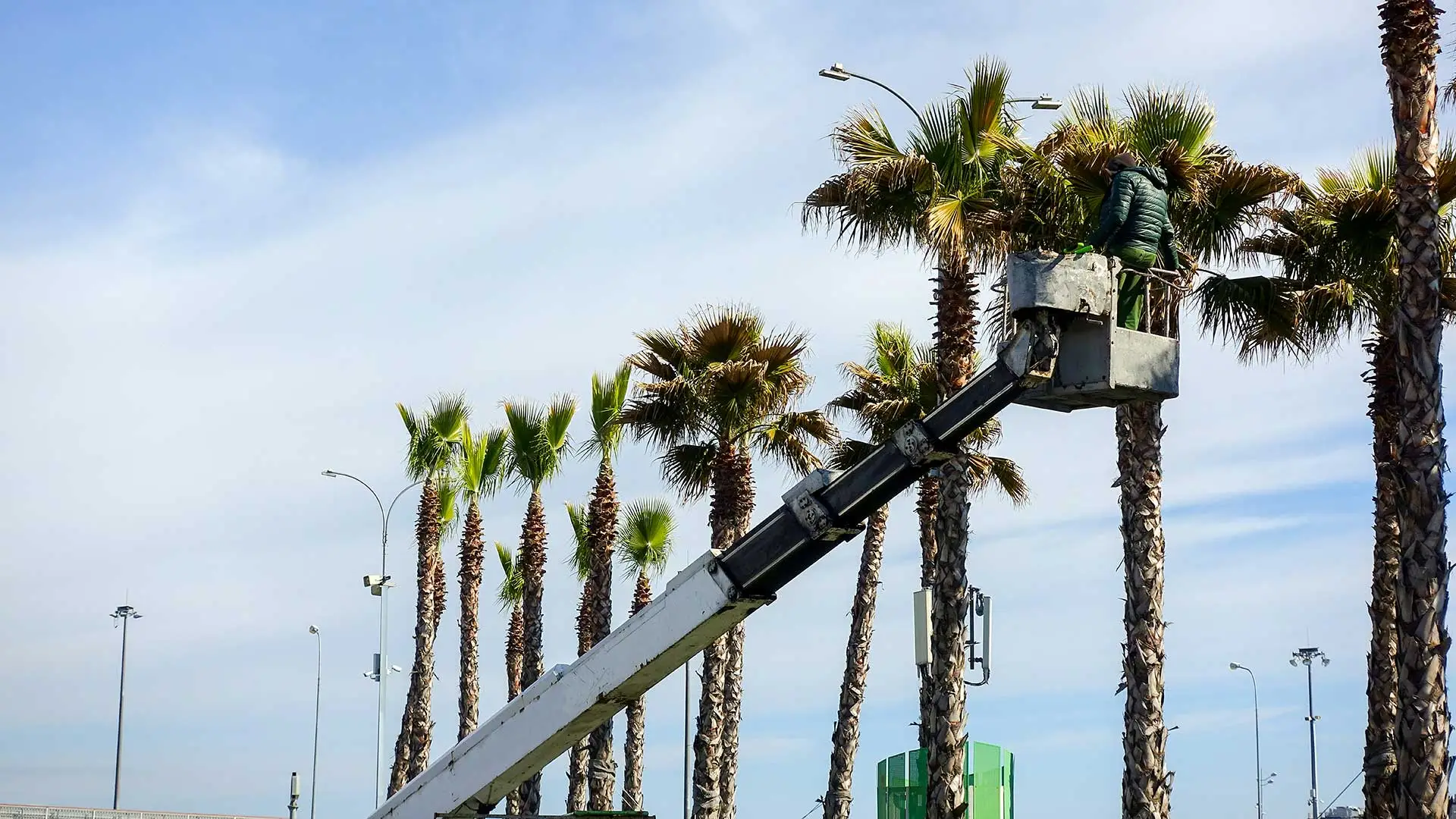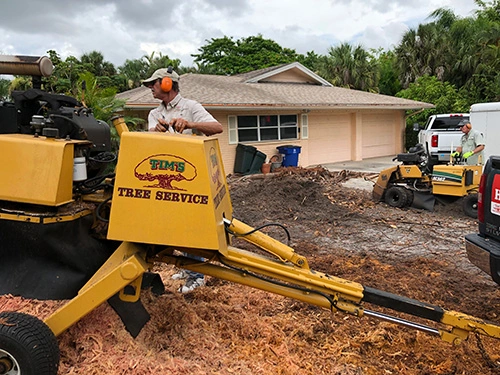Palm trees are tall perennial trees with leaves that drop over their long trunks. Palms are ornamental and thrive well in a variety of sun and shade conditions. A thousand varieties of palms grow in the United States, with some of the most common species found in Florida. Continue reading to learn more about palm trees and their terminology, as well as the types of palms that are native to Florida.
General Terms of Palm Trees
- Frond - A frond is the leaf of the palm tree that grows from the crown of the plant. You can identify a palm tree by looking at the fronds alone. Fronds come in different leaf styles such as pinnate, palmate, and bipinnate. They have green to brownish-green colors and can be thick or thin, depending on the palm tree type.
- Leaflet - The fronds are separated into leaflets, which are attached to a single stem. The leaflets are often V-shaped, either upright or inverted.
- Sheath - A sheath is the leaf structure closest to the palm tree’s trunk. The sheath holds the leaf to the trunk.
- Fruit bunch - A fruit bunch grows on an oil palm tree and is harvested to process palm oil. Oil palm trees bear fresh fruit bunches every three years.
- Spathe - A spathe is a large, woody bract covering the flowering portion of the palm.
- Petiole - This is the leaf stem of the palm frond. It is found between the leaf sheath and the leaflets.
- Bulb - Palm plants have bulbs, also called pups, that look similar to flower bulbs. The bulbs are common with sago palms. A sago palm is a shrub-like palm tree that has a short, thick trunk with long fronds. Bulbs form a cluster surrounding the base of the palm and they grow stems from each bulb.
Becoming an expert in palm tree terms will help you identify any problems that may arise with specific parts of your tree.
Types of Palms Native to Florida
- Pindo Palm - Pindo palm (also called jelly palm) is a slow-growing tree that reaches 15 to 20 feet tall. It has long, arching leaves that can grow from 6 to 10 feet long. Pindo palms bear small, edible, yellow- to orange-colored fruits; these fruits are used to make jellies or jams.
- Dwarf Palmetto - Dwarf palmetto (or sabal minor) grows up to four to six feet tall. It has fan-shaped leaves that can reach three feet in diameter. Dwarf palmetto bears edible, berry-like fruits that have a black color when ripe. The flavor of the dwarf palmetto berries tastes like dates.
- Needle Palm - The needle palm has a slow growth process that reaches up to three to six feet tall. Its spiky-shaped leaves are green and glossy. The needle palm produces oblong-shaped, reddish to brownish fleshy fruits.
- Cabbage Palms - Cabbage palm (or sabal palmetto) can reach up to 40 to 50 feet and up to 90 feet in shaded, woodsy areas. It has leaves that reach six feet in length, with each yellow or green leaf split into full, fan-like leaf pieces. The cabbage palm fruit turns from green to purplish-black when ripe. The flavor of the cabbage palm berries is similar to prunes.
- Saw Palmetto - Most saw palmettos grow as shrubs up to three to seven feet tall. Saw palmetto has fan-shaped leaf blades and produces large-seeded, edible berries.
- Bismarck Palm - Bismarck palm reaches 40 to 70 feet tall, growing one to two feet in height per year. This tree has wide, silver-greenish leaves that can grow to four feet wide. Bismarck palm has separate male and female plants. The female bismarck produces inedible brown fruits that mature in clusters. Male bismarck palms develop long, brown, flowering clusters.
- Alexander Palm - Alexander palm (or solitaire palm) is a fast-growing tree that grows up to a height of 20 to 25 feet in full sun and shade. The alexander palm produces a cluster of long fronds at the top. The big, feathered leaves have around 60 to 80 thin leaflets on each of the sides. Alexander palms develop small, rounded fruits that turn from green to bright red when ripe. The fruits lose the red coloring when they age and expose their brown and fibrous flesh.
- Foxtail Palm - Foxtail palms reach up to 20 to 25 feet and grow to their full height in 20 years or less. They have arched, feathery, or foxtail-like leaves. Foxtail palms produce green fruits that turn red or orange when ripe. The seeds are poisonous when eaten.
- Royal Palm - Royal palm is a fast-growing tree that reaches 50 to 80 feet tall. It has bowing, evergreen fronds that grow eight inches long with tubular leaf bases. Royal palms bear spheroid green fruits that turn red when maturing and become purplish-black when ripe.
Take care of your tropical giants. Hire our tree services today!
Knowing the terms and types of palm trees native to Florida allows you to get more out of your palm tree. At Tim's Tree Service, we are your tree experts. Our crew will ensure that your palms and other trees are happy and healthy all year long. We offer trimming, pruning, removal, stump grinding, and more in Cape Coral, Fort Myers, Lee County and nearby areas in FL. Contact us at (239) 994-6384 for an estimate!




Comments (0)
Thanks for your comment!
Thanks for your feedback! Your comments have been successfully submitted! Please note, all comments require admin approval prior to display.
Error submitting comment!
There is a problem with your comment, please see below and try again.